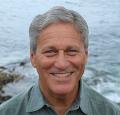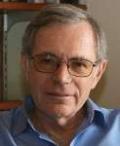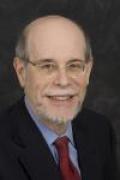For a decade, the West has sleep-walked through a new kind of warfare being waged from Moscow. It took Putin's ground war against Ukraine to wake people up.
At a moment when wealth inequality and industrial giants seemed irreversible, McClure’s Standard Oil story assigned a face to a phenomenon that many saw as outright evil.
Editor's Note: Adapted from Citizen Reporters: S. S. McClure, Ida Tarbell, and the Magazine that Rewrote America by Stephanie Gorton (Ecco/HarperCollins, 2020)
Newsboys in antebellum New York and elsewhere were embroiled in all the major conflicts of their day, becoming mixed metaphors for enterprise and annoyance.
Editor's Note: Vincent DiGirolamo is a professor of history at Baruch College in New York City.
Historic microphone used by Edward Murrow for London broadcasts to be loaned to the National Press Club
On a sunny and crisp Saturday morning last month, at a rest stop on New Jersey’s Garden State Parkway, there was a clandestine handoff of “the Holy Grail of broadcast journalism.”
Edward R. Murrow’s radio broadcasts from London, aired live while Nazi bombs fell around him, are classics of journalism – and literature.
Editor's Note: Bob Edwards is a Peabody Award-winning journalist formerly with NPR and Sirius/XM Radio. He is author of Edward R.
Facebook and Google have repeatedly blocked American Heritage's content because they can't tell the difference between Russian trolls and a trusted, award-winning magazine.
Congress should investigate the widespread censorship of quality journalism by Facebook and Google, and their discriminatory practices against respected legacy publications.
Like Donald Trump, FDR waged his own war on "fake news"— and specifically on Chicago Tribune publisher Robert R. McCormick.
Editor's Note: Stephen Bates teaches First Amendment law, writing, and other subjects at the University of Nevada in Las Vegas.
Not given credit for their work and paid half a man's salary, women writers won a landmark suit against discrimination at the magazines of Time, Inc., but their success has been largely overlooked.
In 1967 Time Inc. was the biggest magazine publisher in the world, and highly profitable. Its founder, Henry Luce, was still alive.
Seventy-five years ago this June, the celebrated writer for The New Yorker was one of the first journalists to witness the carnage on Omaha Beach.
Nearly 1,800 newspapers have died since 2004, creating “news deserts” across the country. At many remaining journals, cuts have been so deep that they've become “ghost papers.” What are the implications for democracy?
The author and her team of researchers at the University of North Carolina have compiled a database of 9,000 newspapers across the U.S.
The late David Halberstam was a journalist, heart and soul, with a distinctive way of writing history
DAVID HALBERSTAM had put the finishing touches on his final book, The Coldest Winter, in the spring of 2007, just five days before his tragic death in a car accident in California.
CHARLES SAXON’S fond but clear-eyed cartoons are a definitive record of suburban life in the 1960s and ’70s
When his affluent neighbors in suburban Connecticut accused him of using them as characters in his New Yorker cartoons, Charles Saxon quickly assured them that he was “really satirizing himself.
What you don’t remember about the day JFK was shot
It was a series of sounds and images that had monumental impact and will always remain in the minds of those who watched: the bloodstained suit, the child saluting the coffin, the funeral procession to the muffled drums, the riderless horse.
A VETERAN JOURNALIST reflects on how public discourse has been tarnished by the press’s relentless war against Presidents—including his own biggest offense
He was a Northerner. He was an industrialist. He was a Jew. And a young girl was murdered in his factory.
ON DECEMBER 23, 1983, THE LEAD EDITORIAL IN THE ATLANTA Constitution began, “Leo Frank has been lynched a second time.” The first lynching had occurred almost seventy years earlier, when Leo Frank, convicted
A newsman returns to a classic work by a famous predecessor and finds that Mark Sullivan’s vanished America has something to tell us
He may have been the greatest caricaturist of all time—he has imitators to this day—but his true passion was for a very different discipline
The trouble was, he couldn’t say no to anyone.
Seen in its proper historical context—amid the height of the Cold War—the investigation into Kennedy’s assassination looks much more impressive and its shortcomings much more understandable
In September 1994, after doggedly repeating a white lie for forty-seven years, the Air Force finally admitted the truth about a mysterious 1947 crash in the New Mexico desert.
An Interview With Walter Cronkite
As the editors discovered right at the outset of planning this issue, it is all but impossible to think about the course of the past forty years without also thinking about Walter Cronkite.
The most powerful columnist who ever lived single-handedly made our current culture of celebrity— and then was destroyed by the tools he had used to build it
“WHY WALTER WINCHELL?” I have been asked repeatedly during the years I have been working on a biography of him. Why someone so passé or someone so beneath contempt as also to be beneath biography?
The mysterious apotheosis of the newspaper editor
It’s a bad sign when a company decides that to sell its products it needs to bundle them together with miscellaneous, unrelated goods. It suggests that relations have grown strained between product and customer, that either the product is obsolete or the competition is fierce.
Their unwilling subjects considered the tabloid photographers pushy and boorish. But they felt they were upholding a grand democratic tradition.
In 1928 the New York Daily News recruited Tom Howard, a Chicago Tribune photographer who was unknown to New York law-enforcement authorities.
The American newspaper: beleaguered by television, hated both for its timidity and for its arrogance, biased, provincial, overweening—and still indispensable. A Hearst veteran tells how it got to where it is today, and where it may be headed.
By general consensus the first attempt to start a regularly published newspaper in America was Publick Occurrences Both Forreign and Domestick , issued in Boston on September 25, 1690.
In the infancy of television (but not of American royalty-worship) the networks fought their first all-out battle for supremacy over who would get to show Queen Elizabeth II being crowned
When American television was very young, but American royalty-worship was not, the biggest, loudest, most pointless battle for supremacy among the networks was over which would be first—by mere minutes, if necessary—to show pictures of the coronation of the B
In 1935 Fortune magazine published a profile of the Hearst empire, which said that William Randolph Hearst’s assets—twenty-eight newspapers, thirteen magazines, eight radio stations, two movie companies, inestimable art treasur
America’s first Miss Lonely hearts advised generations of anxious lovers in the newspaper column that started it all
Miss Beatrice Fairfax:
He wanted only what every journalist of the time did: an exclusive interview with the Duke of Windsor. What he got was an astonishing proposition that sent him on an urgent top-secret visit to the White House and a once-in-a-lifetime story that was too hot to print—until now.
It was, said one of the few people who knew about it, “the greatest news story on earth.” It belonged exclusively to my father, a prolific writer, but he knew it could not be published.
It took us longer to name the war than to fight it
Something began at 7:50 A.M. (Hawaiian time), Sunday, December 7, 1941. Most Americans seemed convinced it was World War II. But one man wasn’t so sure.
H. T. Webster’s cartoons offer a warm, canny, and utterly accurate view of an era of everyday middle-class life
H. T. Webster was not a great artist. Once he had established a style, it hardly changed in more than forty years of drawing.

























